Architects: Tono Mirai Architects
Area: 10 m²
Year: 2023
Photographs: Takeshi Noguchi
Manufacturers: Sanwa, Velux, Woodio
Lead Architect: Tono Mirai
Landscape Designers: WAKUWORKS
Clients: Ishizaka Corp.
Signage Design: TSDO, Taku Sato
Building: Terashima Corp.
City: Miyoshi
Country: Japan
TOILETOWA, a pioneering architectural project designed by WAKUWORKS in Oak Forest, highlights a circular model of environmental stewardship and recycling. The structure, built on the premises of Ishizaka Corp, serves as a toilet and an educational space promoting sustainable practices. Crafted from recycled materials and employing innovative waste management systems, TOILETOWA exemplifies the potential for architectural projects to foster ecological balance and resource renewal.

TOILETOWA stands as an architectural showcase of circulation and regeneration and extends beyond its function as a toilet to serve as an environmental education space. Located at the headquarters of Ishizaka Corp in Oak Forest, it exemplifies a future-oriented, recycling-based societal model. The facility recycles industrial waste, embodying the lifecycle from creation to reuse.
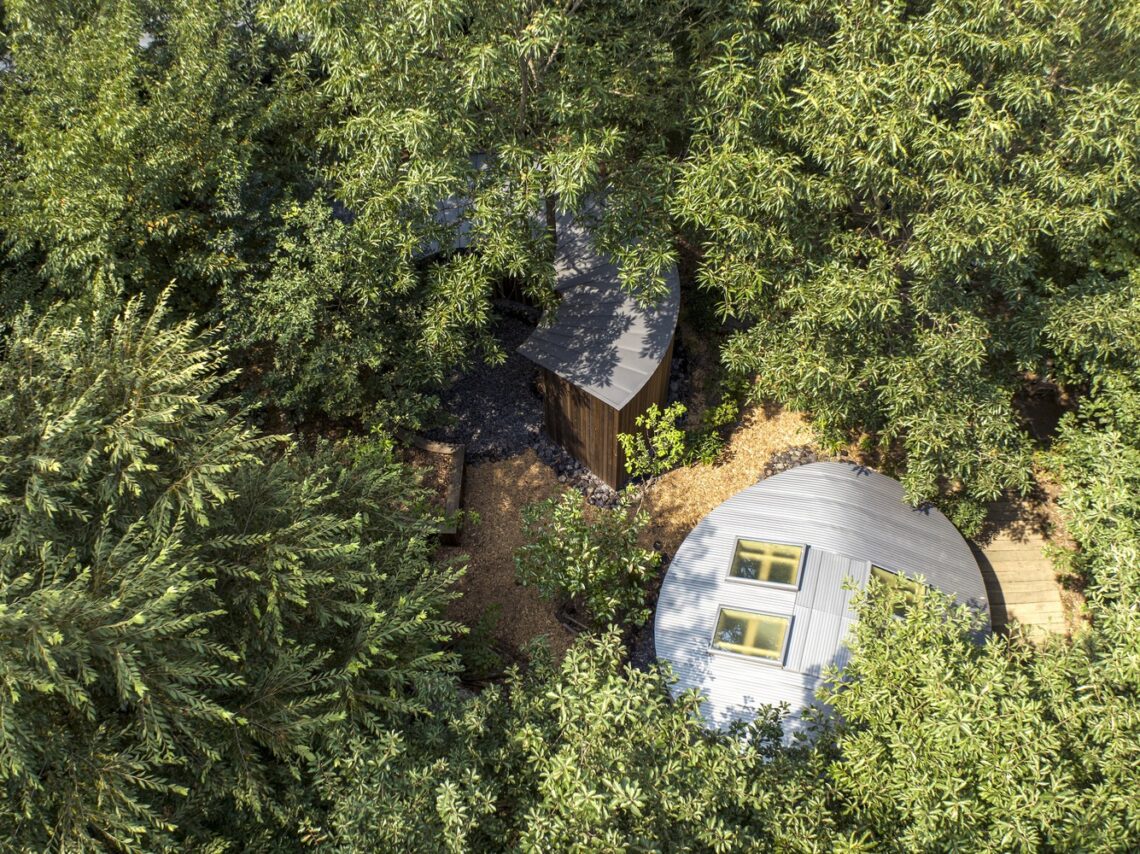
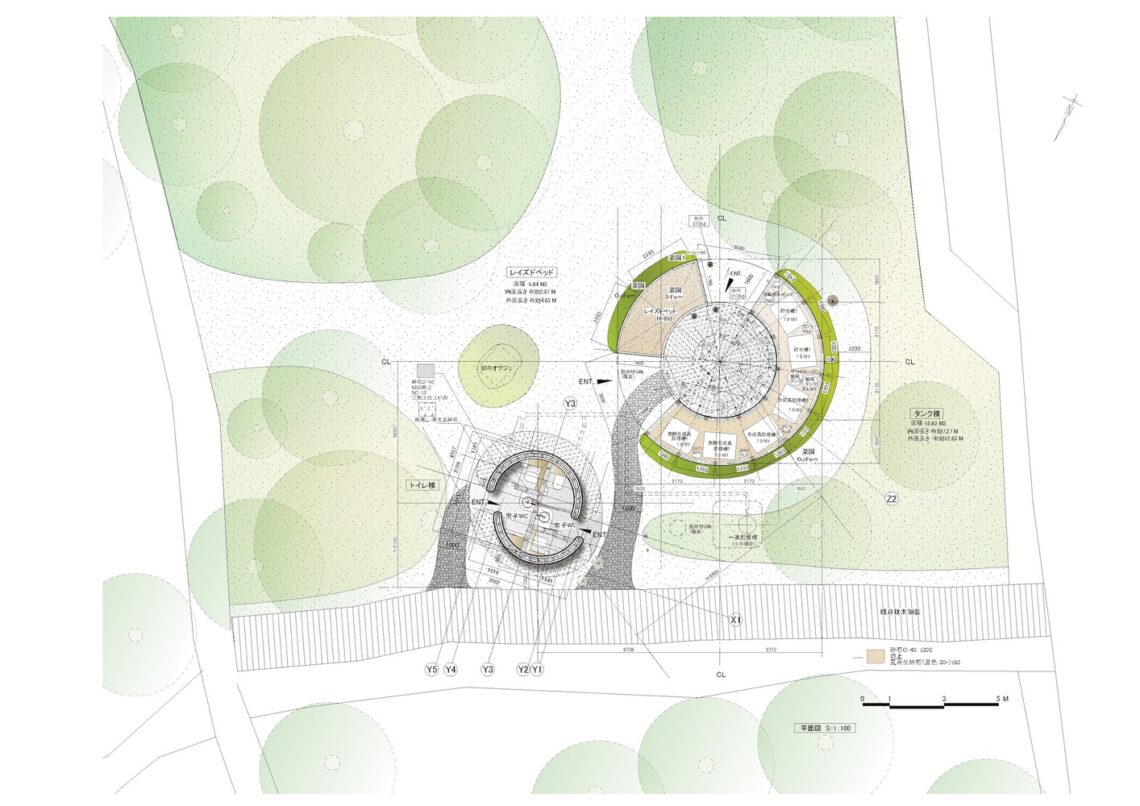
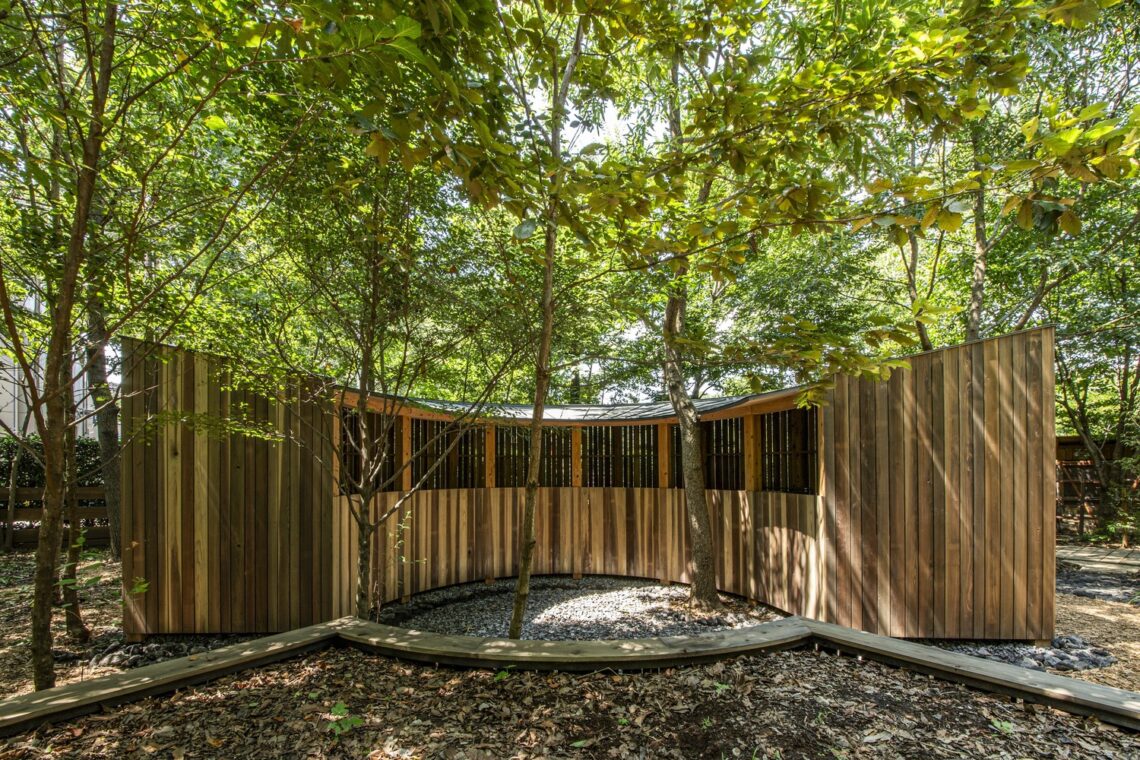
Constructed primarily from wood, TOILETOWA features a toilet facility encircled by a rammed earth wall crafted from the recycled soil NS-10, developed by Ishizaka Corp. Adjacent is a tank building that illustrates the perfect recycling and circulation of wastewater through microbial fermentation. Opting for environmental sensitivity, the foundation employs crushed stone and wooden stakes instead of concrete. The design incorporates recycled materials such as soil, wood, and glass for the interior walls and floors, with fixtures including hand wash basins and toilet bowls made from recycled wood chips.
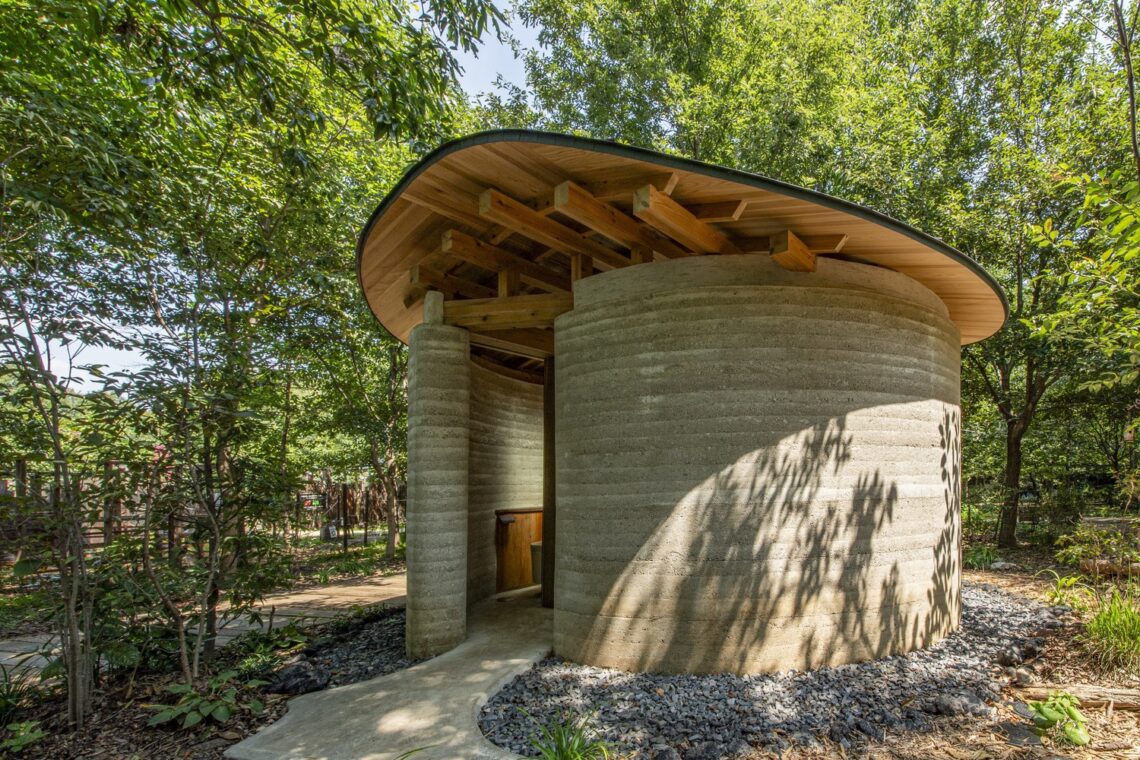
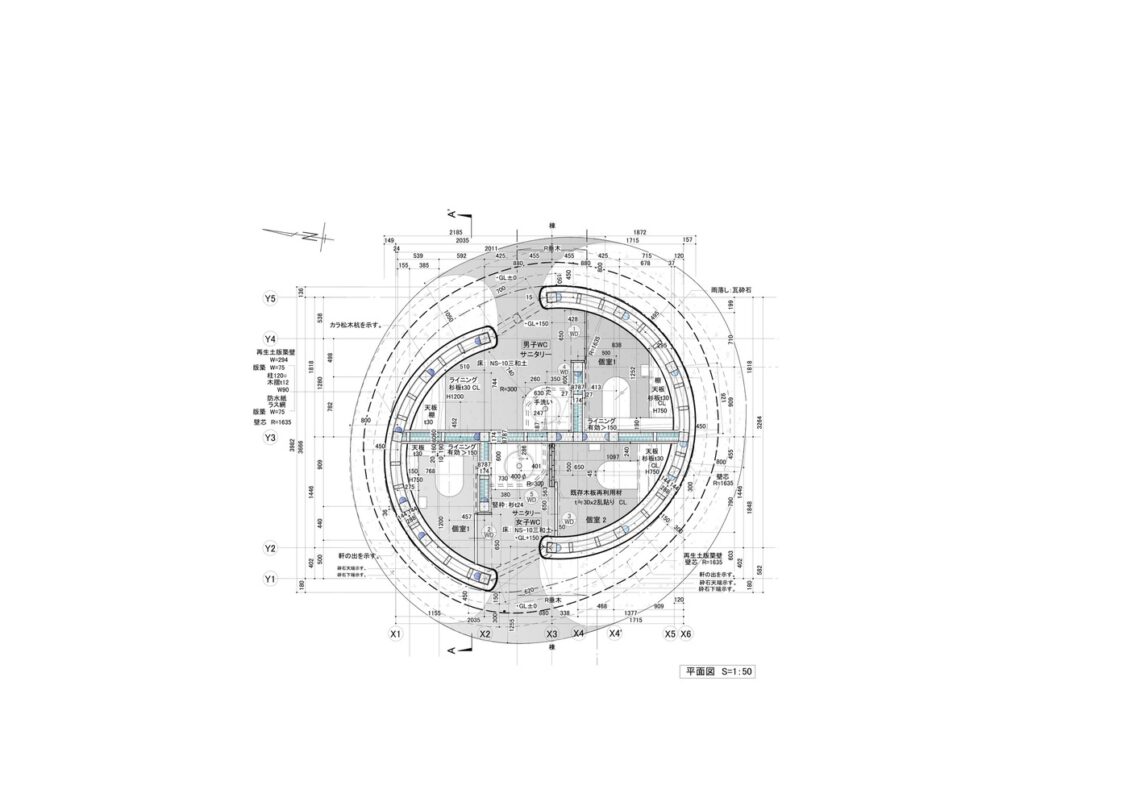
The toilet’s wastewater is fully recycled, repurposed as agricultural water that nurtures the garden crops surrounding the facility. Natural materials used around the building contribute to “regenerating the earth,” enhancing soil permeability to revitalize the local forest and improve air quality. The construction process, carried out by young carpenters, utilized traditional techniques like rammed earth, plastered walls, and earthen floors, promoting the continuous use of age-old building methods.
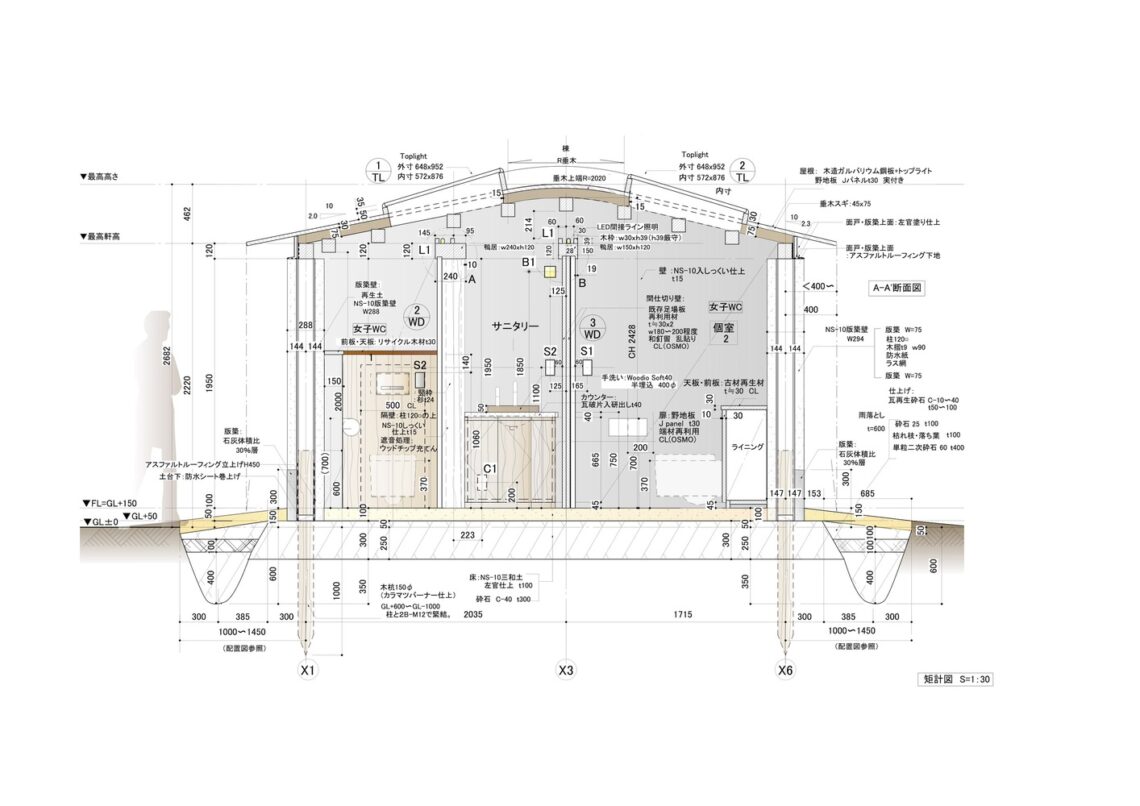
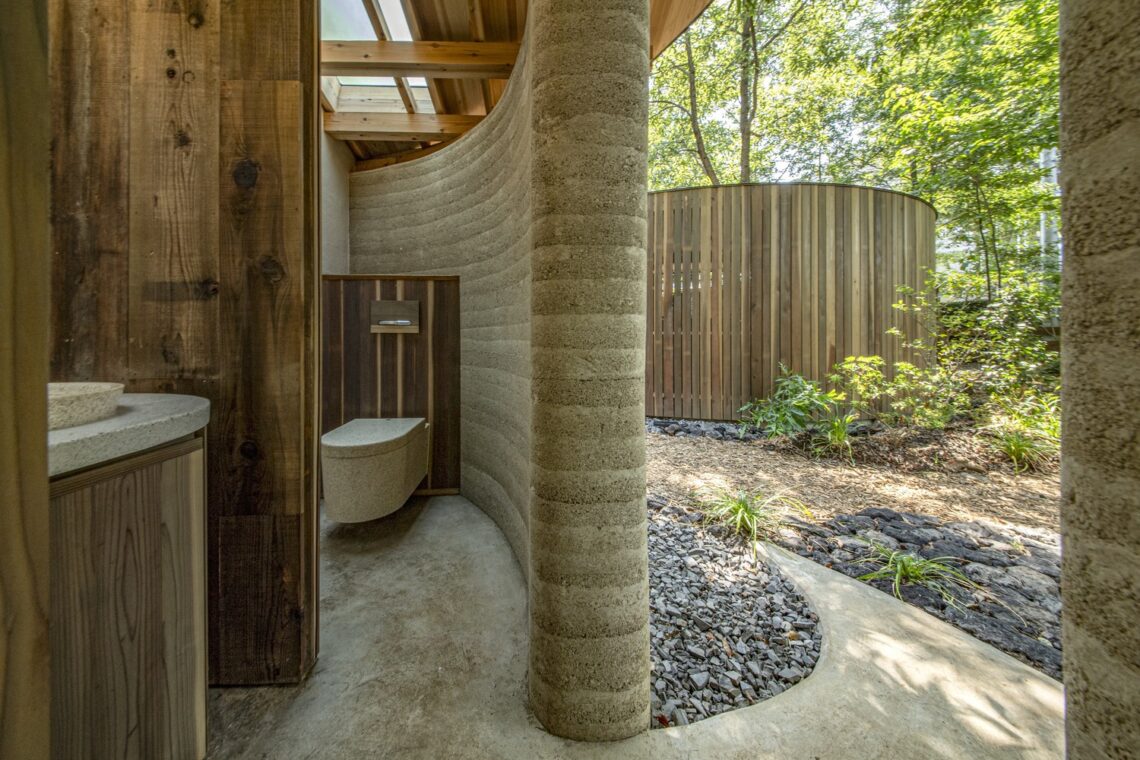
This Toilet Building represents an architectural interpretation of ecological cycles—incorporating water, air, materials, and traditional craftsmanship. The structure largely uses recycled elements, with two semi-circular rammed earth walls positioned to foster a dynamic flow within the forest, drawing natural light through strategically placed skylights. The primary building material, NS-10, is a sustainable blend of gypsum board and soil, processed for structural use here for the first time.

Despite its limited compressive strength, the rammed earth structure serves as an aesthetic and functional complement to the wooden framework, enhanced with slaked lime for stability. The construction also integrates lime into interior plasters and floor materials, testing the versatility of recycled soil.

The Tank Building highlights the longstanding Japanese technique of combined fermentation, used here to demonstrate advanced water recycling designs. Retaining the forest’s natural elements, the building’s layout features a fermentative synthesis process visible through a dynamic, circular architectural arrangement. The exterior, inspired by the local Musashino’s Satoyama forest, utilizes cedar boards of varying widths, treated with a natural wood protectant that matures uniquely under UV exposure, allowing the building to visually merge with its wooded surroundings.
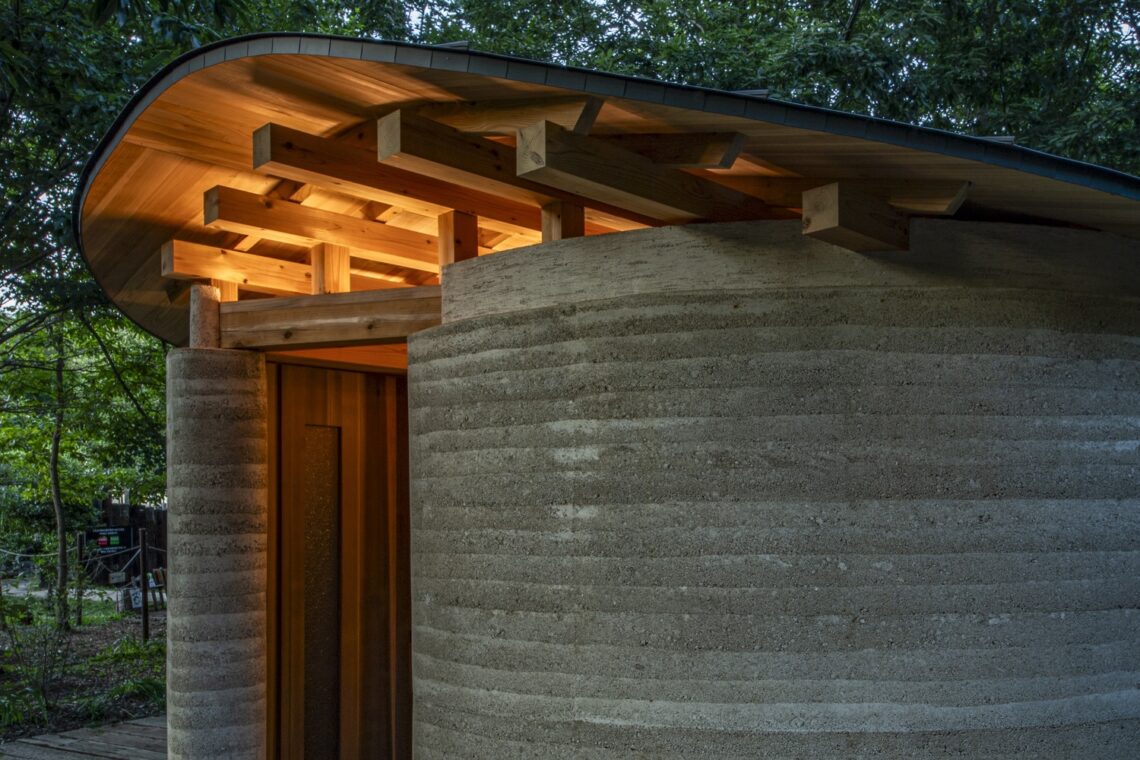
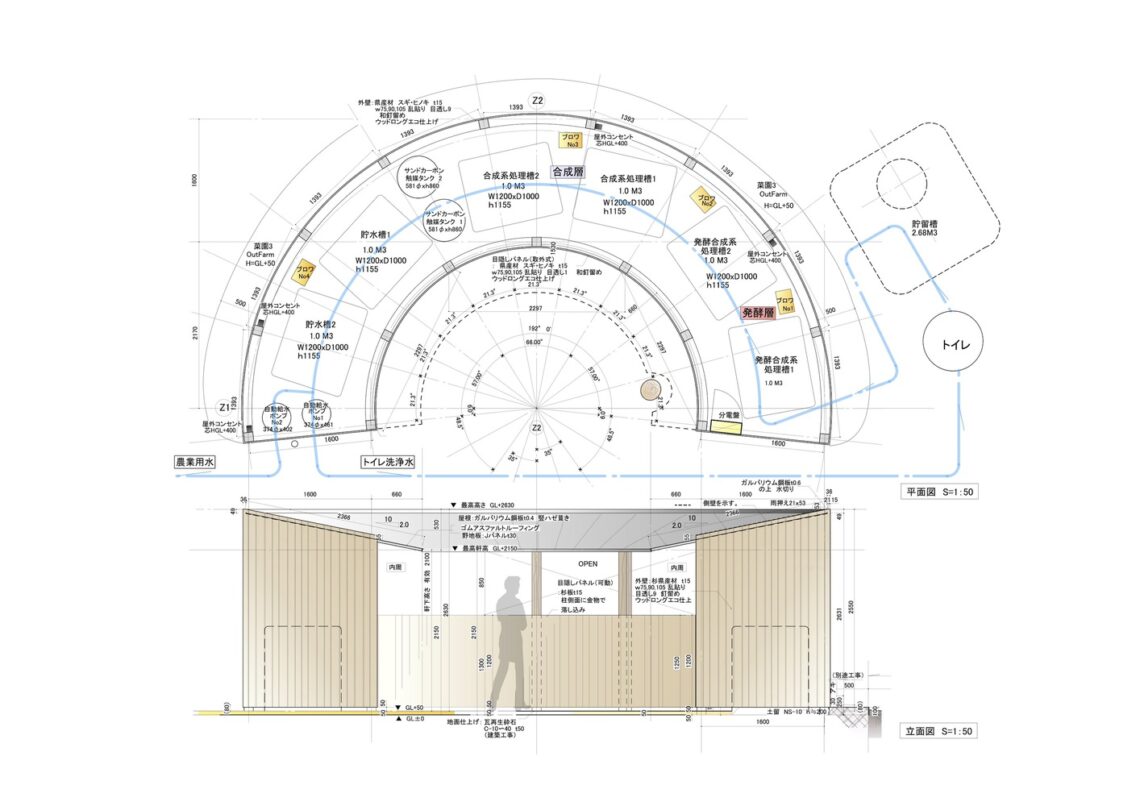
The Combined Fermentation System, a pivotal biotechnological innovation by Dr. Yasuhide Takashima, facilitates the coexistence of aerobic and anaerobic bacteria, achieving a high-quality water purification system that eradicates pathogens and odors, rendering the water potable. The enzyme-rich water enhances soil fertility and boosts agricultural productivity.
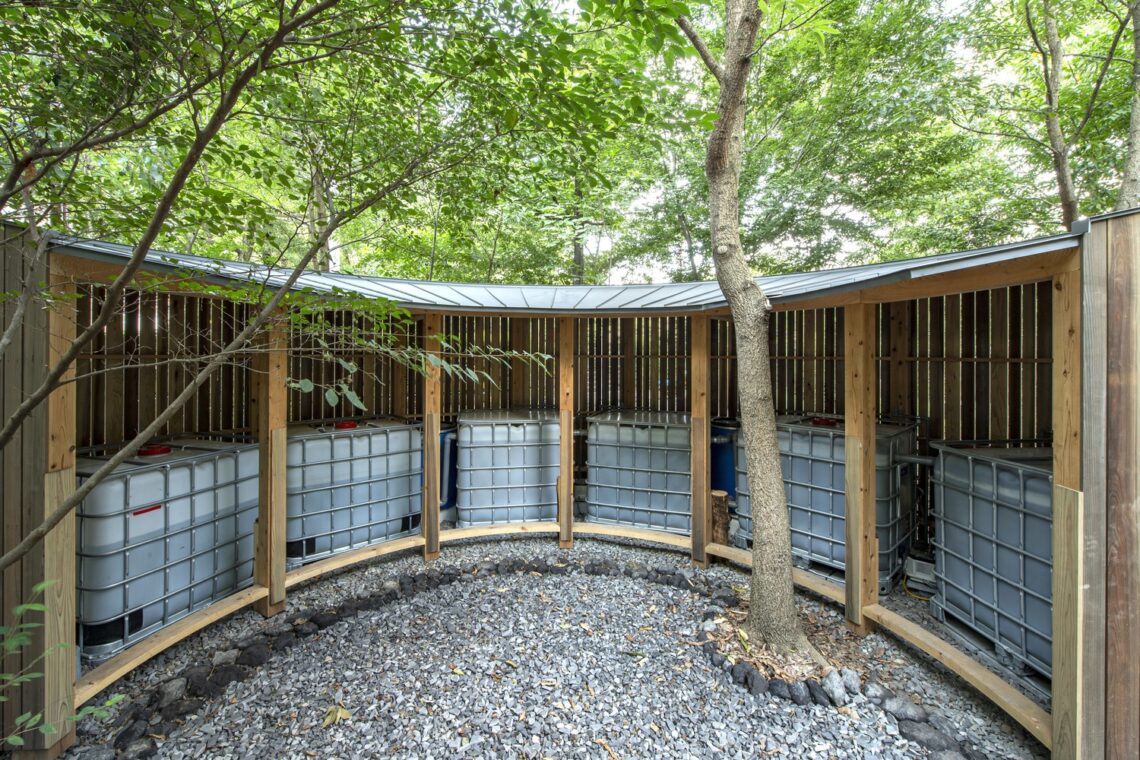
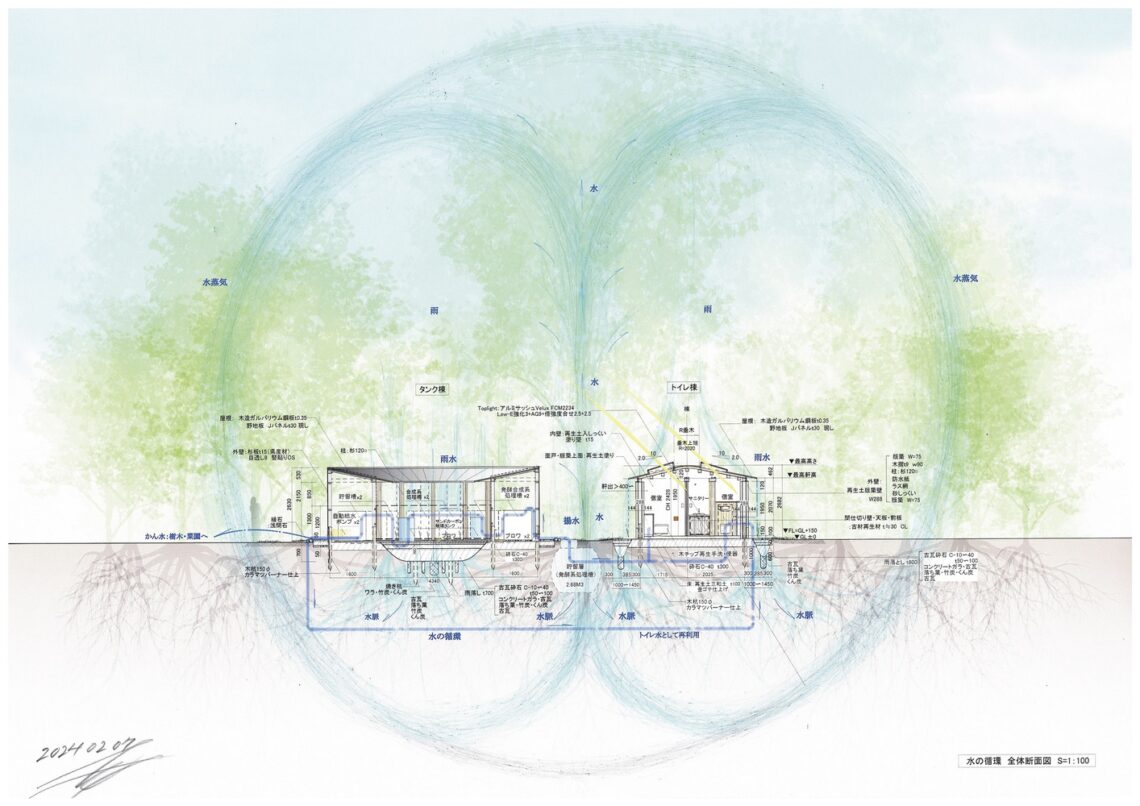
Regeneration of the Earth – As the TOILETOWA project took shape, it became evident that the surrounding forest and soil were deteriorating. In response, WAKUWORKS initiated efforts to rejuvenate the forest’s ecosystem, focusing on the area around the toilet. The strategy involved burying organic materials such as tree branches, fallen leaves, bamboo charcoal, and charcoal both vertically and horizontally within the soil to foster the formation of water veins and enhance subterranean airflow. This process consolidated the soil but also revitalized the mycelium, root systems, microorganisms, and other living organisms, harnessing the natural potency of the earth.

To manage rainfall effectively, recycled crushed stone tiles were deployed, while wood chips and lava stone Asama were utilized for constructing the walkways. This intervention transformed the previously compact and waterlogged soil, eliminating standing water and invigorating the local trees. As a result, a palpable circulation of water and air has been restored in the forest, bridging earth, wood, architecture, and nature. Trees, often referred to as “water pillars,” play a crucial role by drawing water from underground sources and releasing vapor through their foliage. This project has visibly refreshed the forest and subtly reinstated an essential water cycle between the soil and the atmosphere, thereby revitalizing the entire forest ecosystem in tandem with the toilet’s sophisticated fermentation water cycle.

Project Gallery
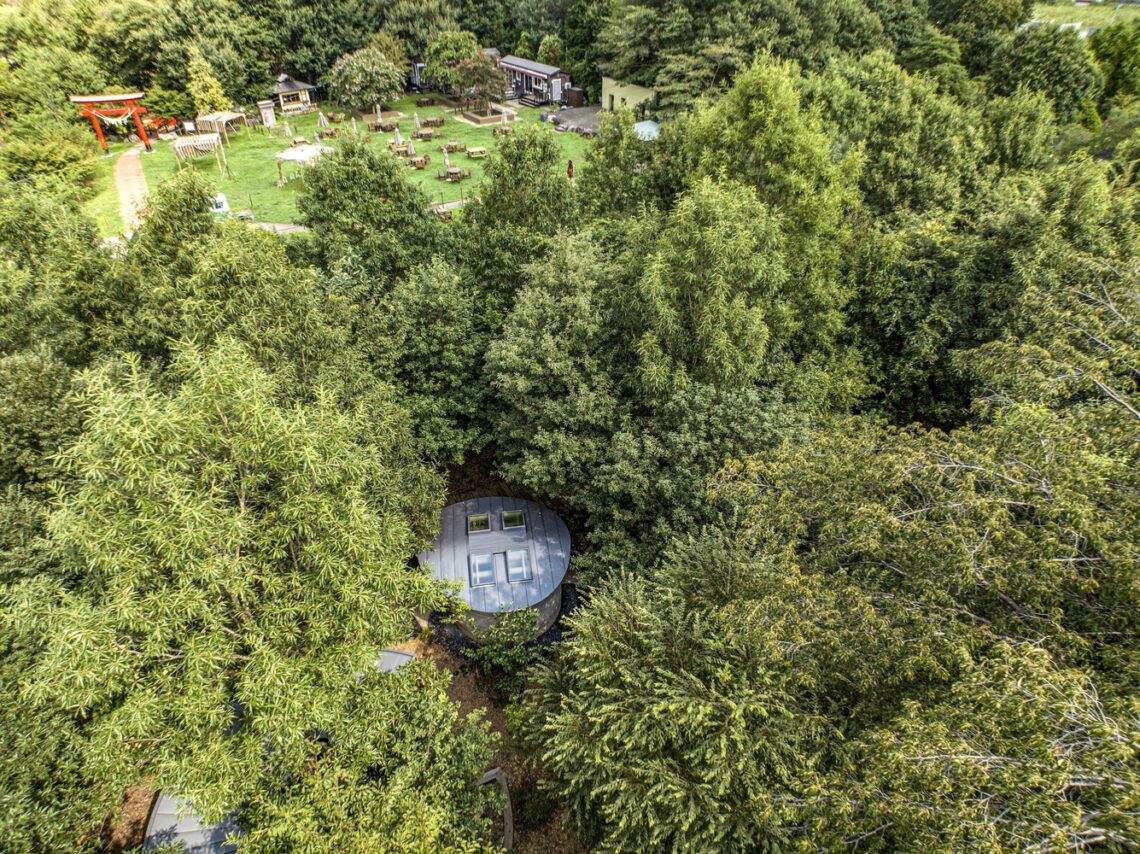

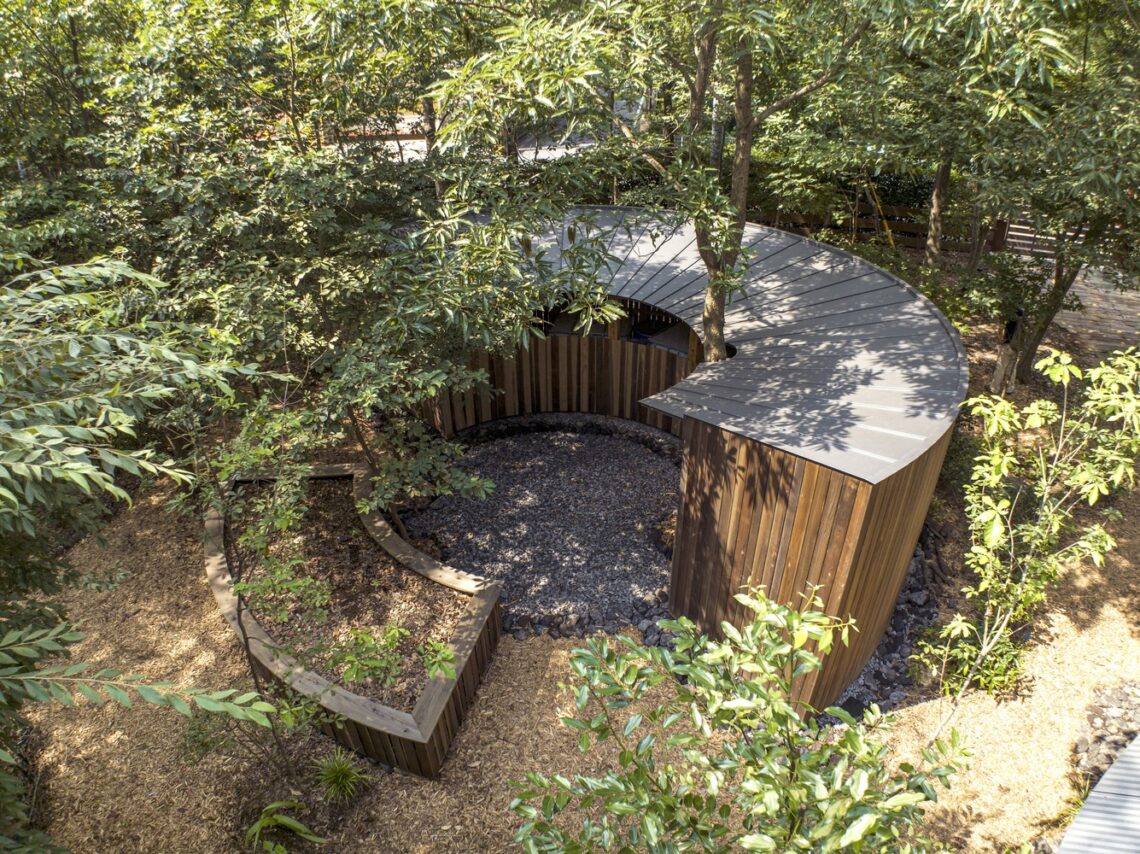
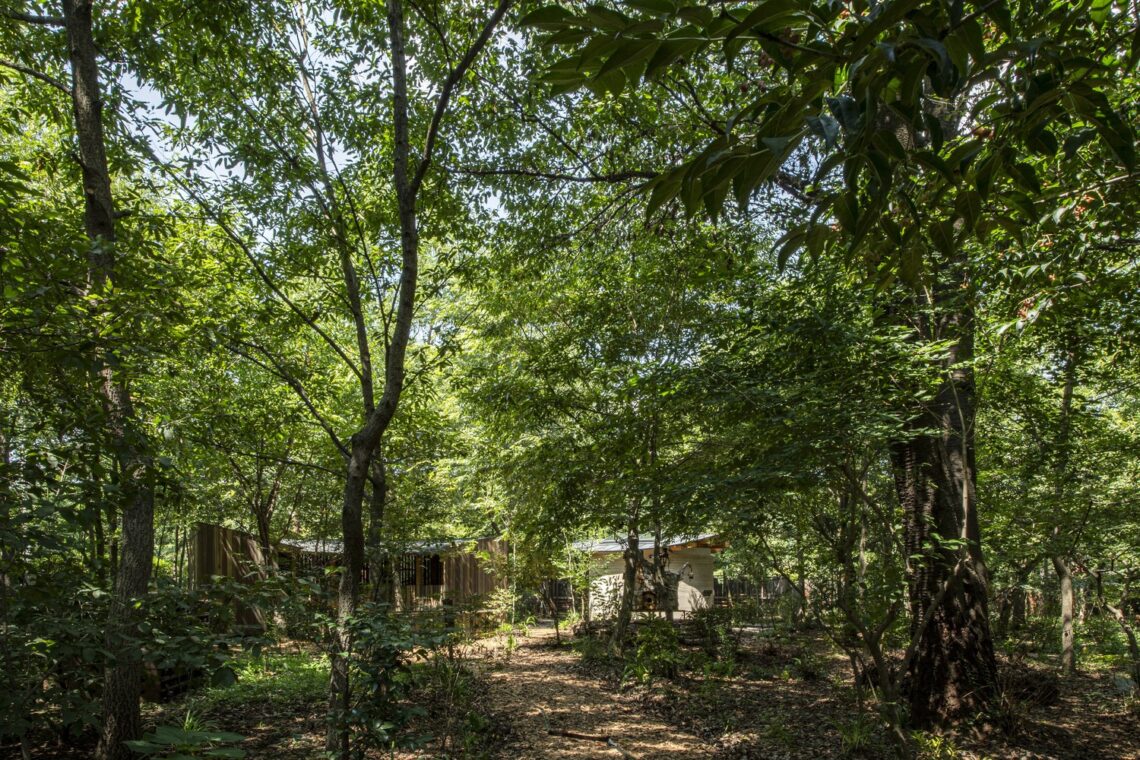
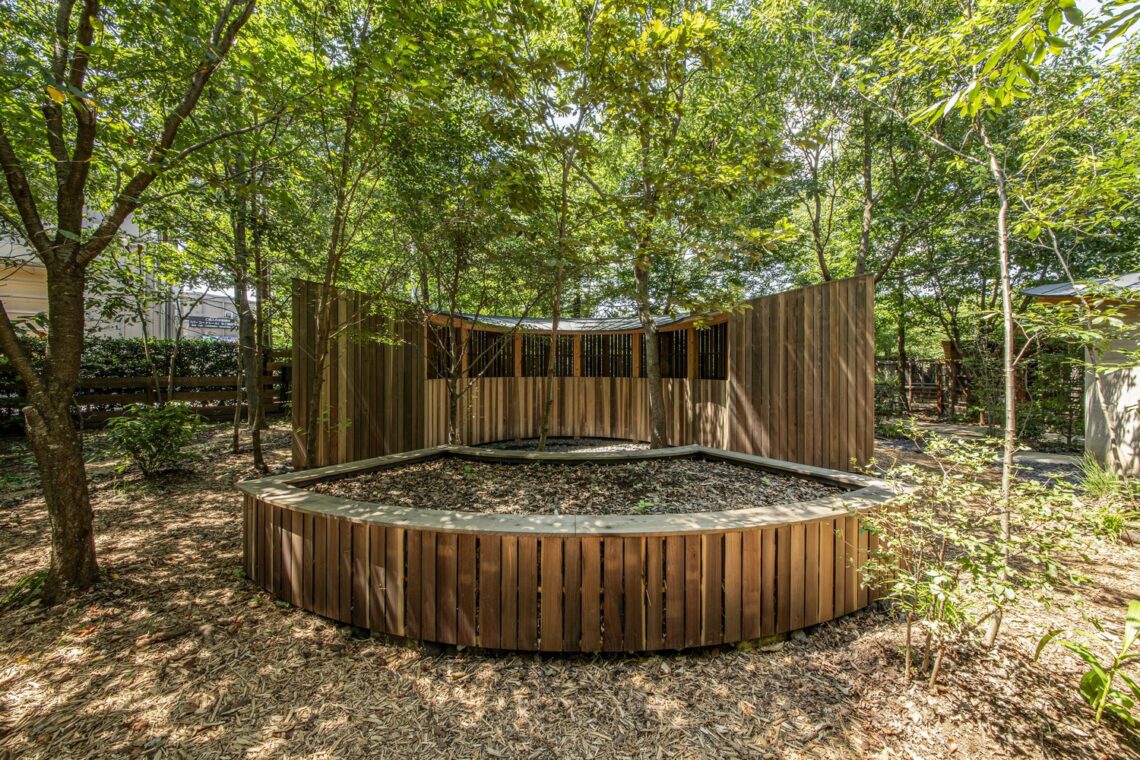

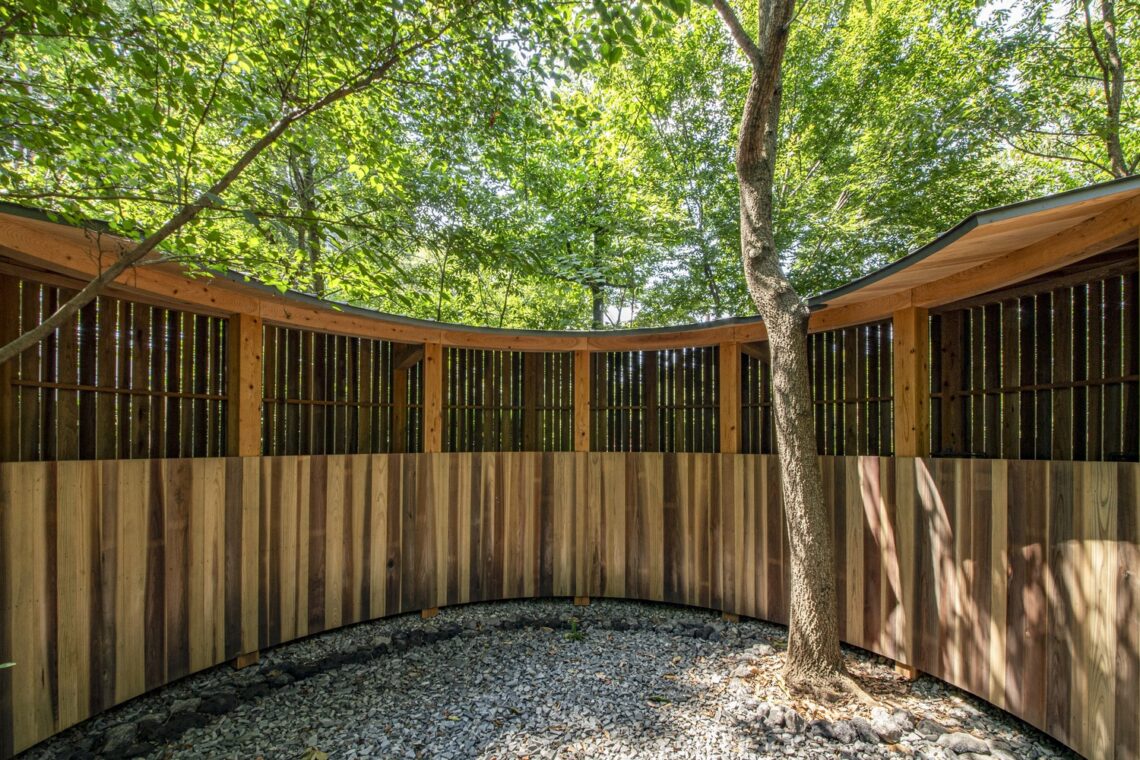

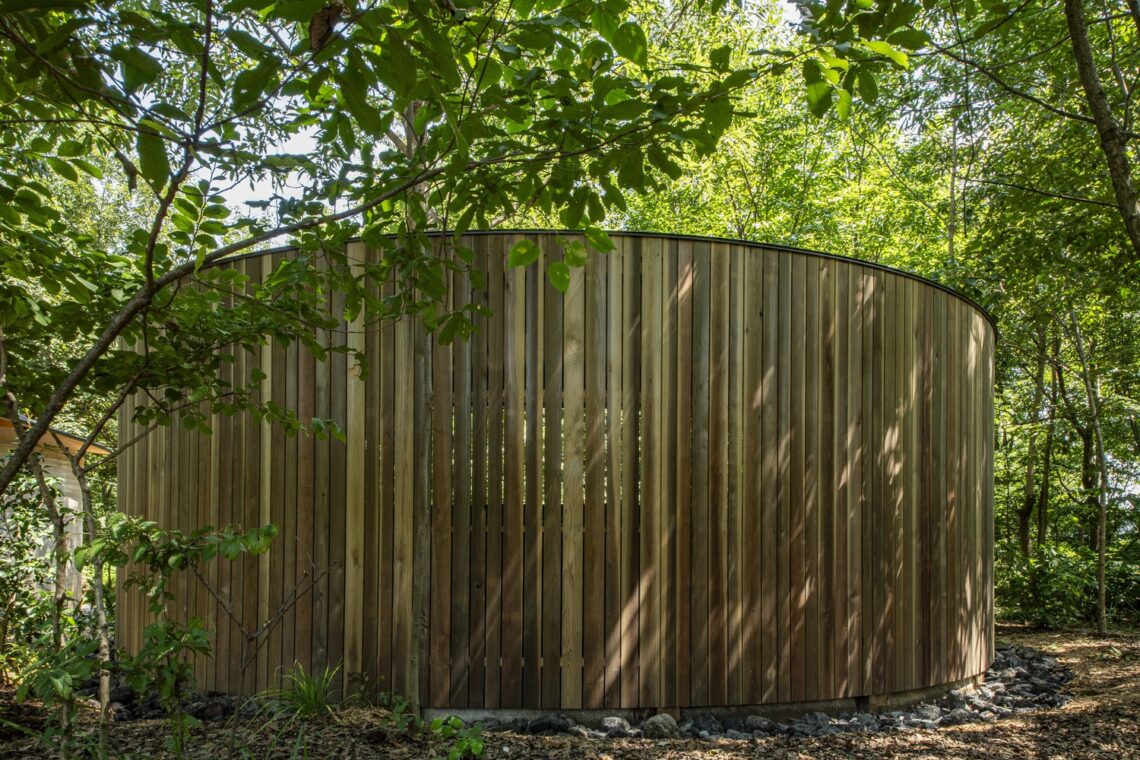
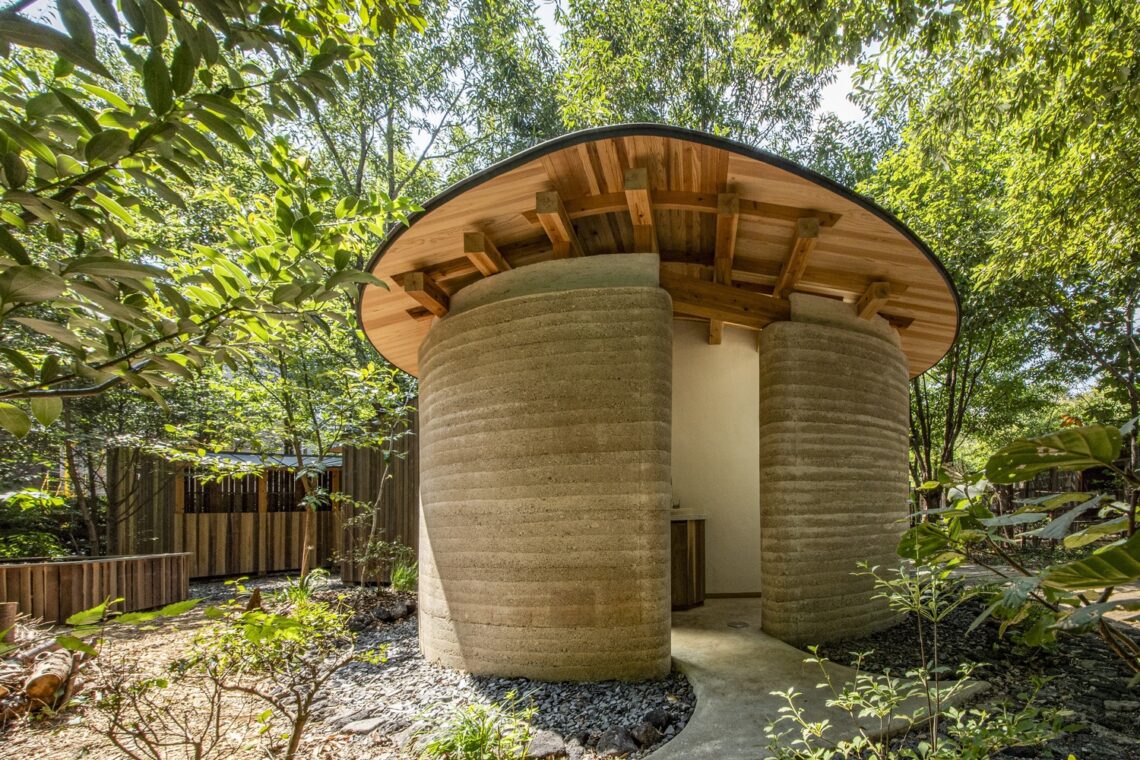





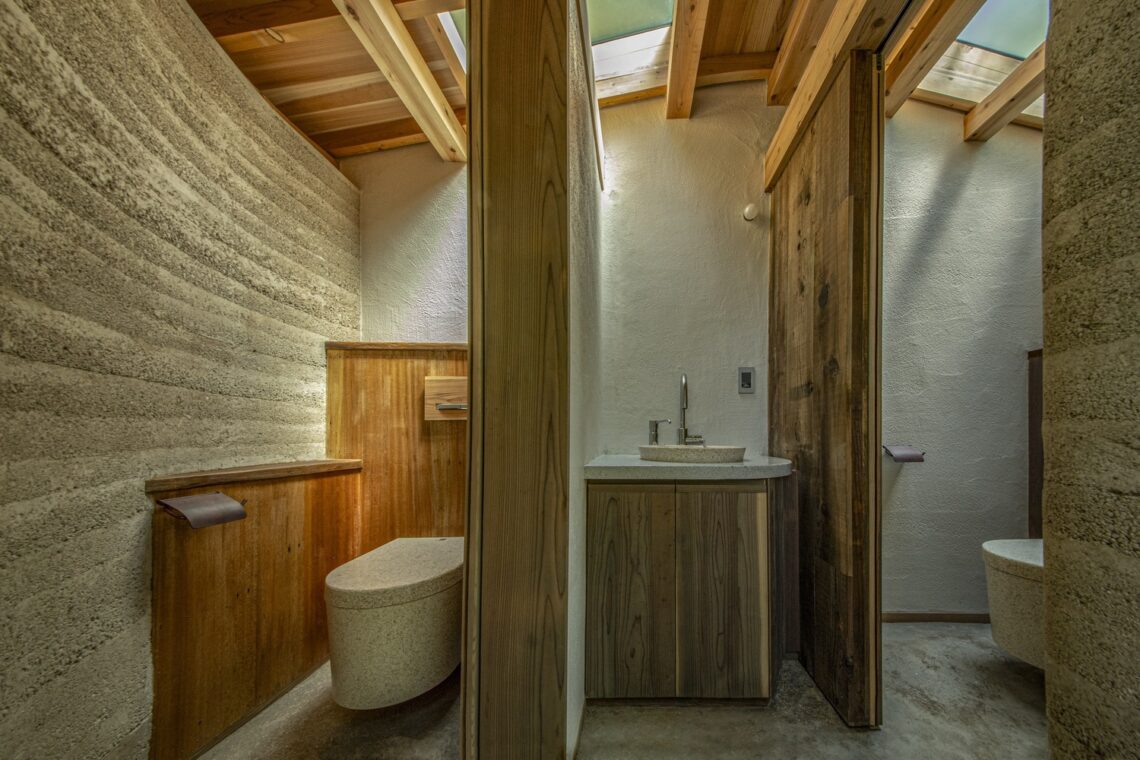
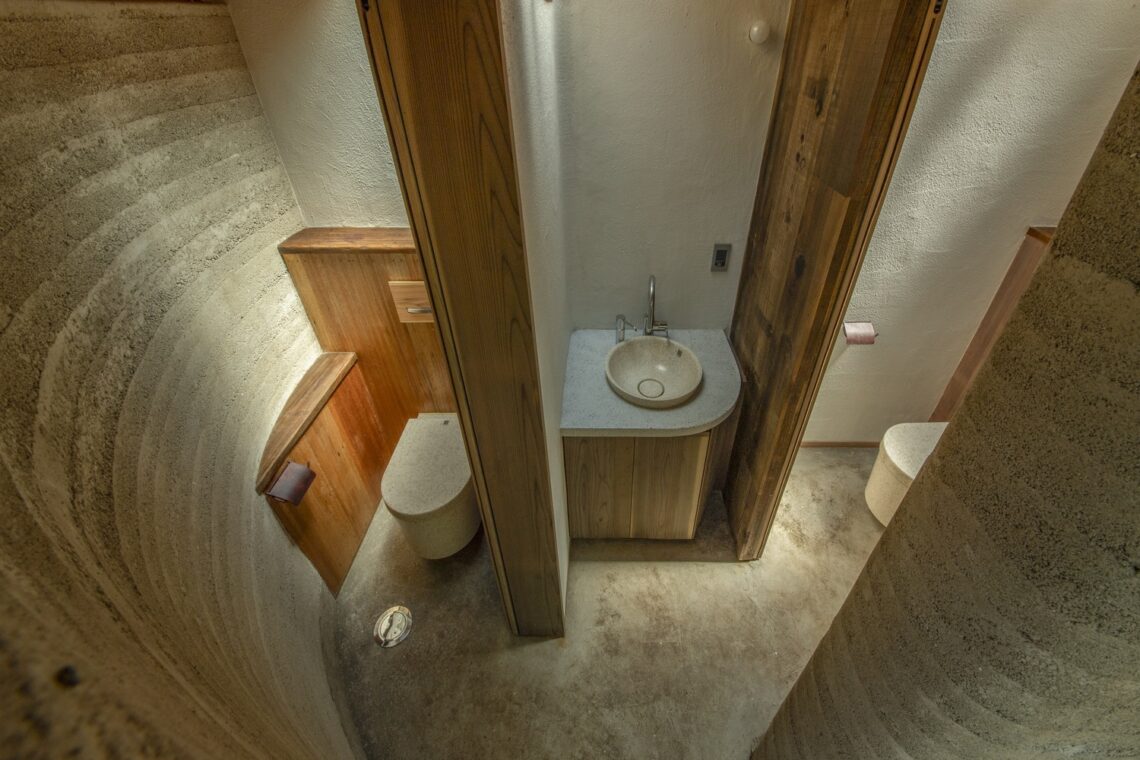

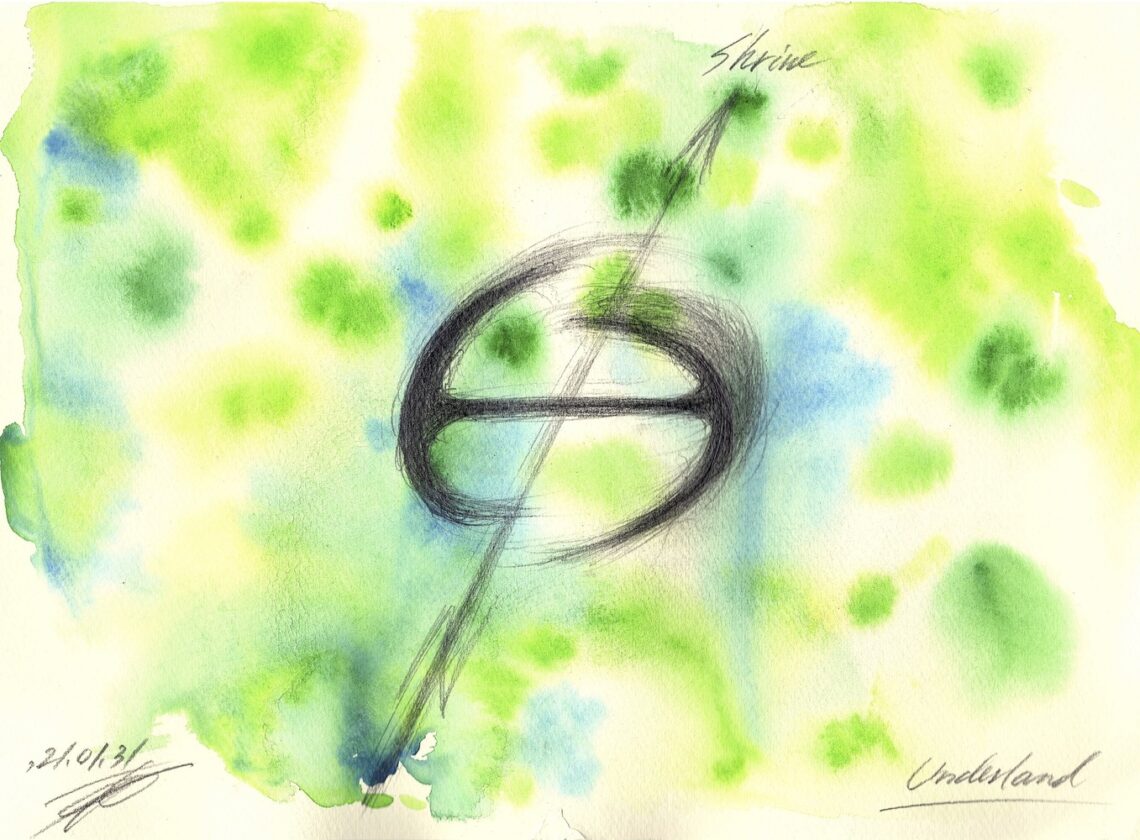



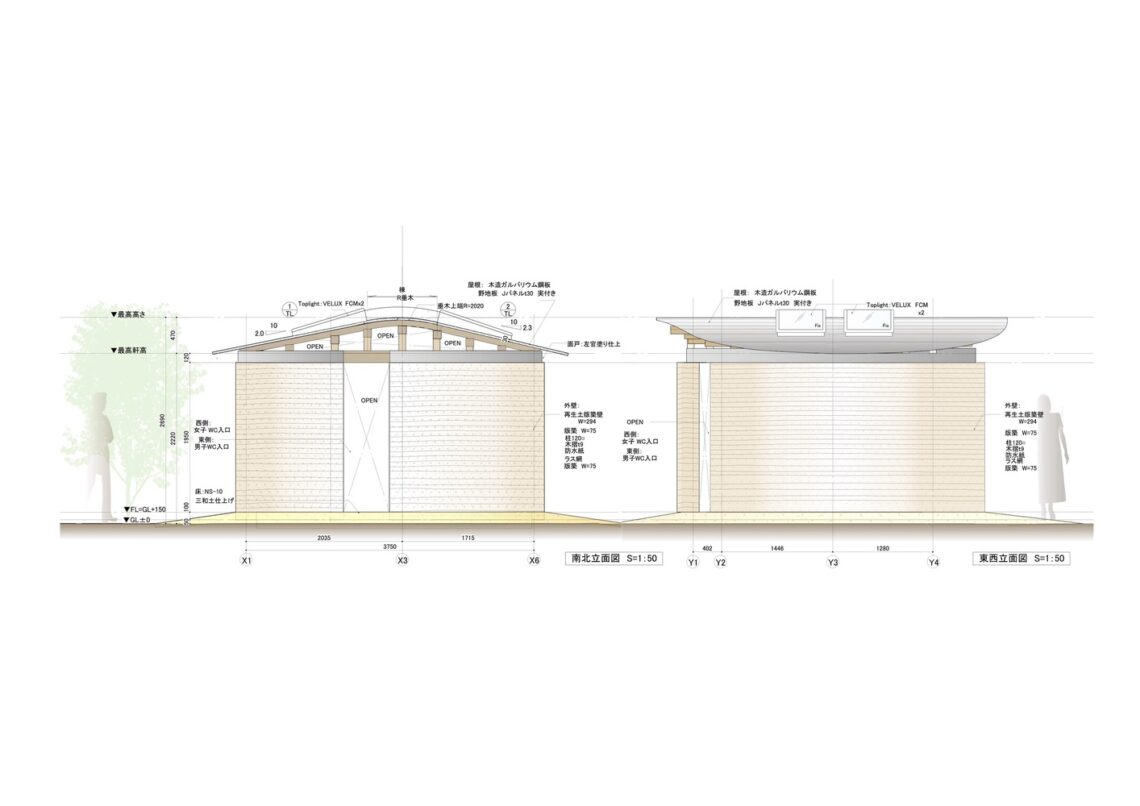

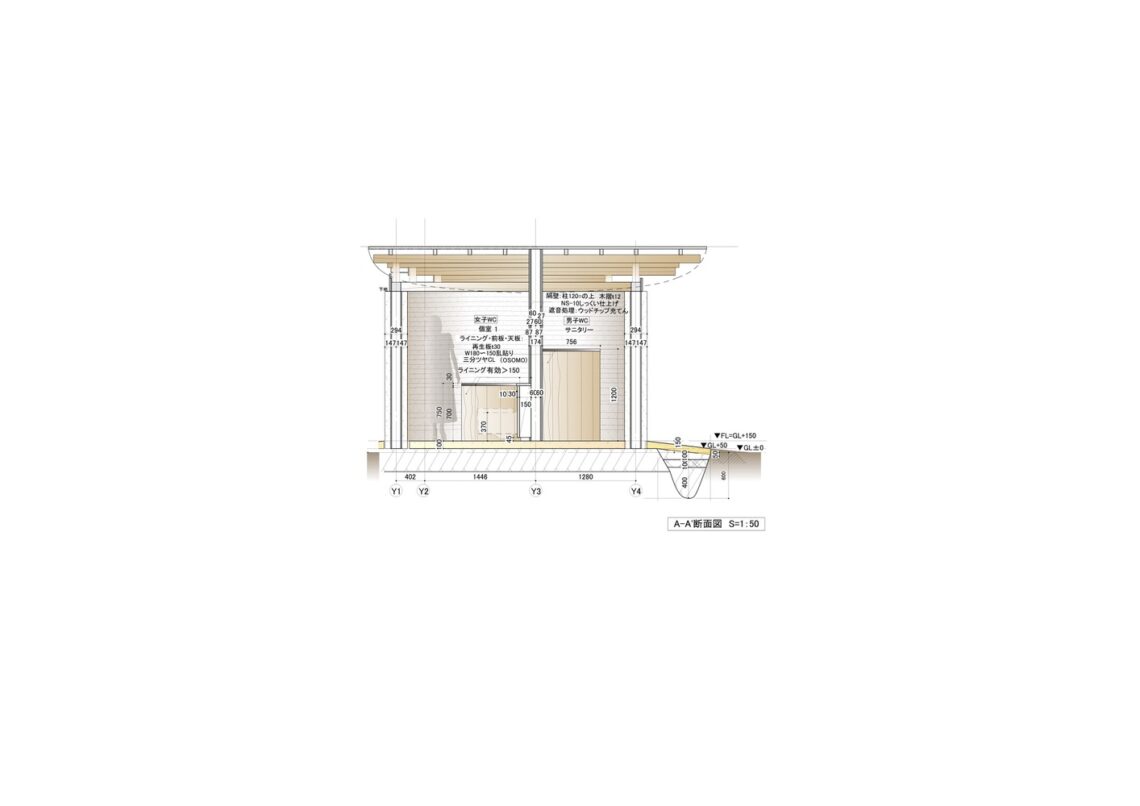
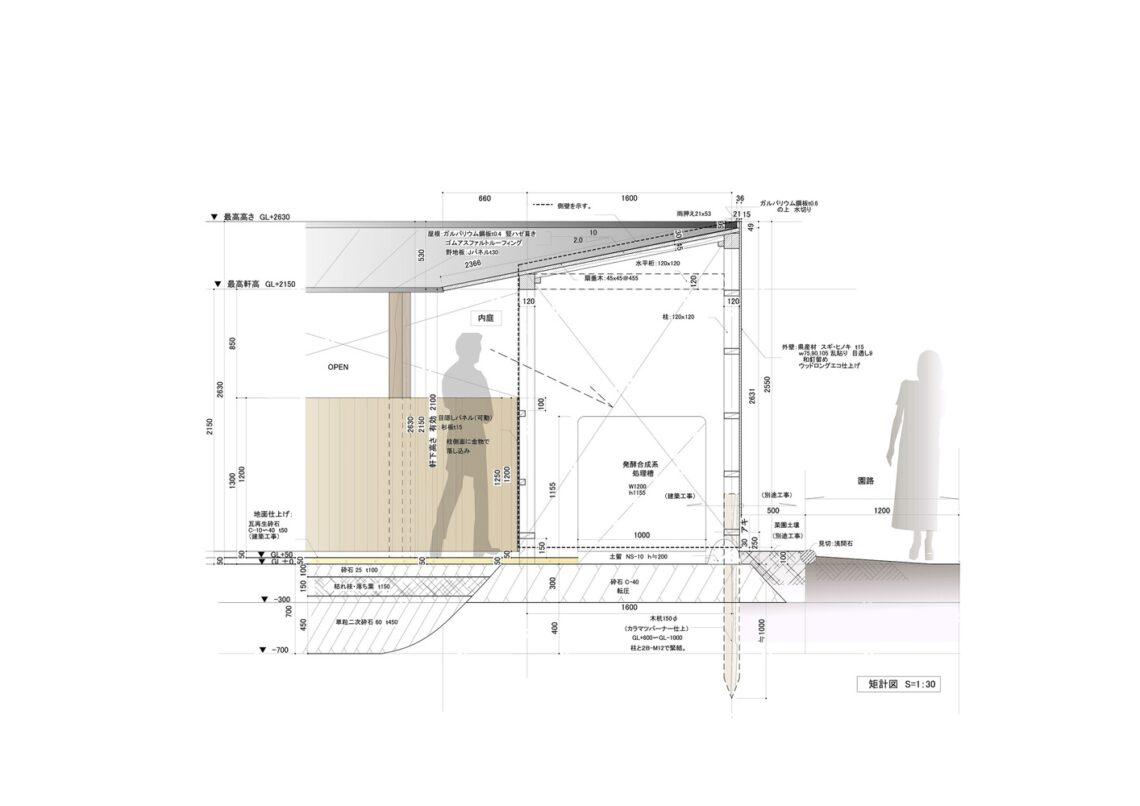

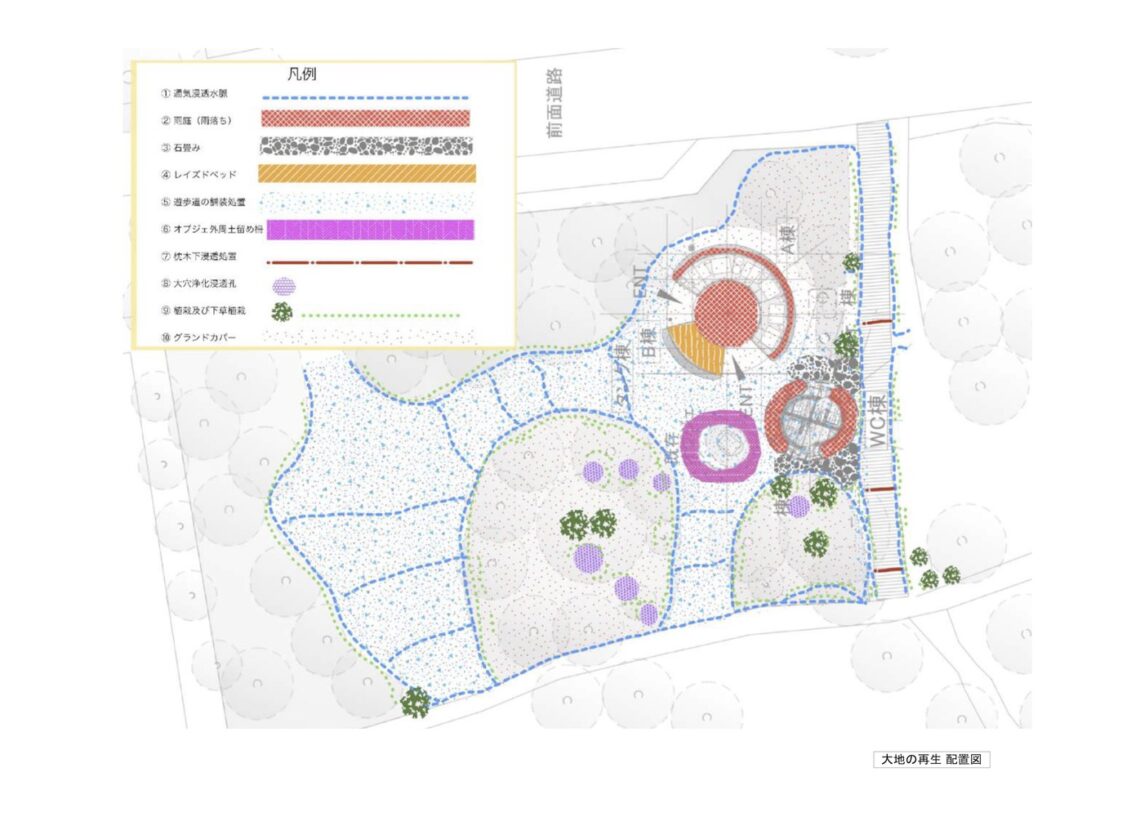

Project Location
Address: Miyoshi, Iruma District, Saitama, Japan
Location is for general reference and may represent a city or country, not necessarily a precise address.


